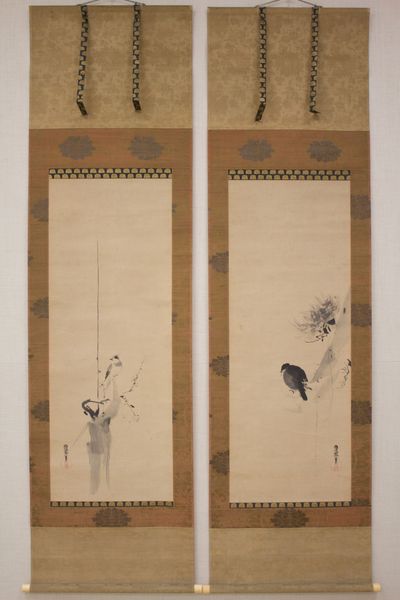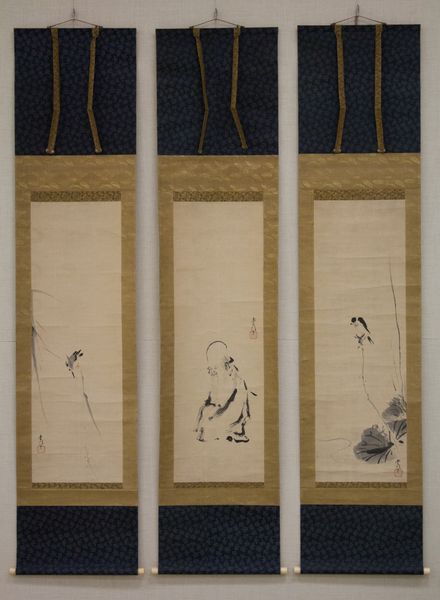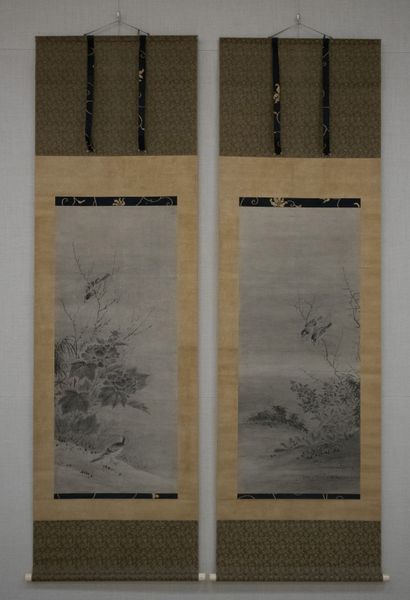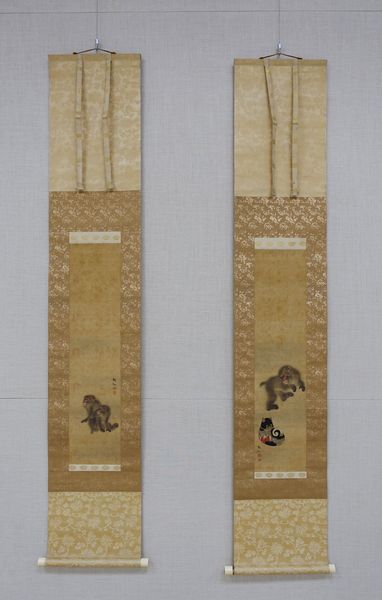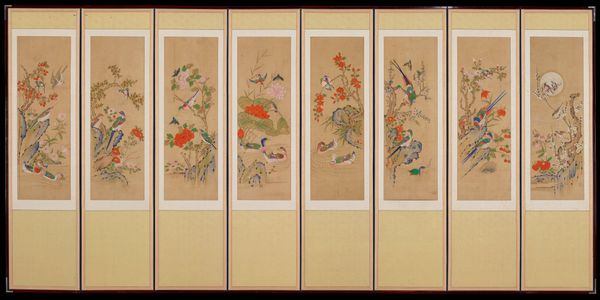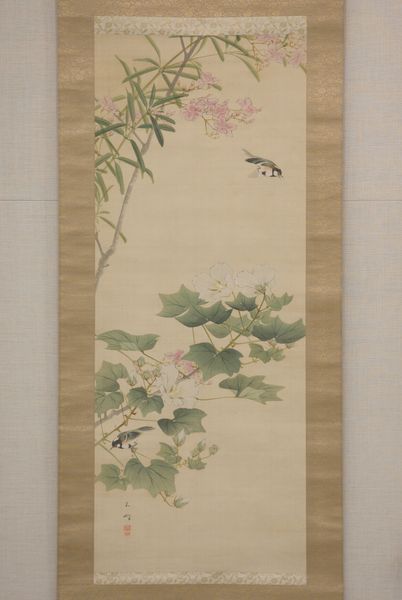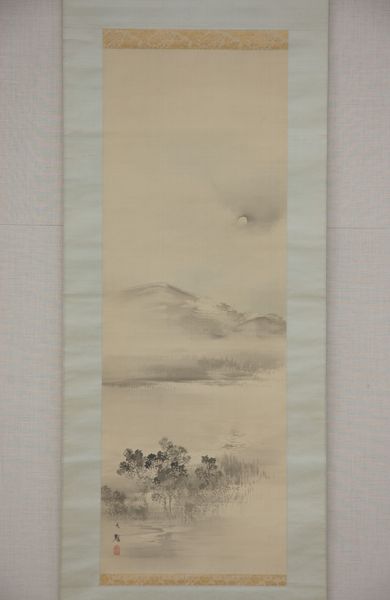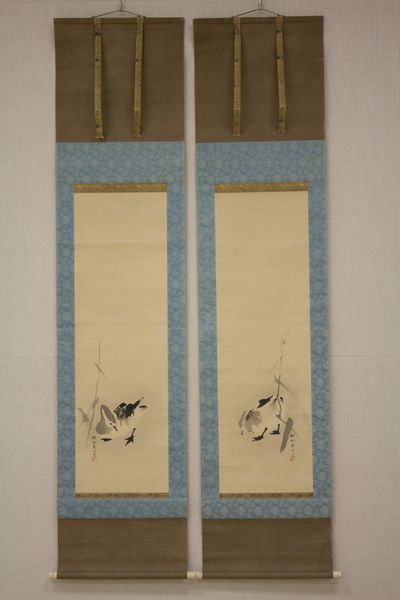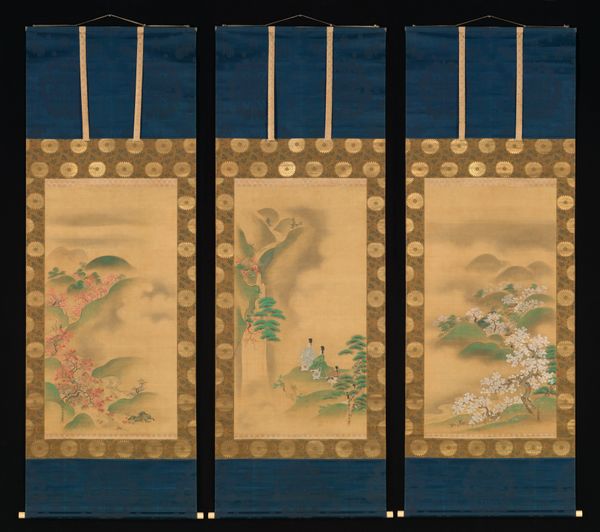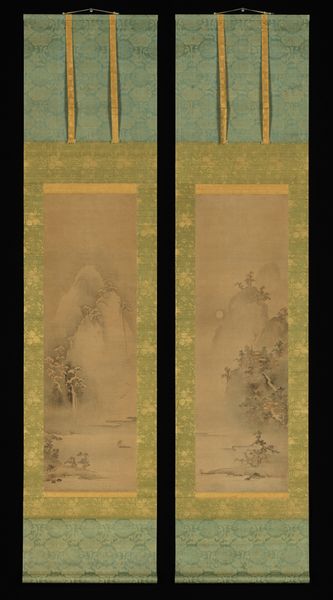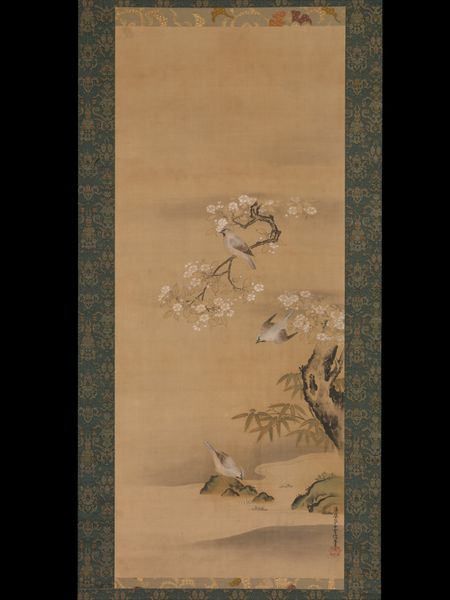
Chinese Woman in a Boat and Figures in Landscapes 1600 - 1636
0:00
0:00
drawing, paper, ink
#
drawing
#
ink painting
#
asian-art
#
landscape
#
figuration
#
paper
#
ink
#
calligraphy
Dimensions: Image (each): 46 9/16 × 19 1/8 in. (118.3 × 48.6 cm) Overall with mounting (each): 83 7/8 × 24 11/16 in. (213 × 62.7 cm) Overall with knobs (each): 83 7/8 × 26 11/16 in. (213 × 67.8 cm)
Copyright: Public Domain
Editor: Right, let’s discuss this fascinating triptych. "Chinese Woman in a Boat and Figures in Landscapes" by Kano Kōi, dating roughly between 1600 and 1636. It's ink on paper. The tranquil landscapes really evoke a sense of harmony with nature. What is your take on this piece? Curator: Indeed. We must consider these landscapes within their historical context. The Kano school was heavily patronized by the shogunate. Think about the role of landscape painting during that period: It wasn't just about representing nature; it was about legitimizing power. How might these serene scenes reflect, or perhaps even mask, the sociopolitical realities of the time? Editor: That's interesting. I hadn't considered the possible contrast between serenity and social reality. So, these idyllic scenes might have served a specific purpose beyond mere aesthetics? Curator: Precisely. The "Chinese Woman in a Boat," for example. What does that imagery evoke in terms of cultural exchange and the shogunate’s relationship with the outside world? Editor: Perhaps the boat is meant to reference overseas commerce. The woman, then, may function as an exotic 'other'—both fascinating and potentially untrustworthy in the eyes of the ruling class? Curator: A very perceptive insight. And notice how the style subtly blends Chinese and Japanese techniques. Whose cultural values are truly being privileged here, and what implications does that have for understanding power dynamics within the art world? Editor: So, by examining art through its historical and political lenses, we start to unpack layers of meaning and understand how power is projected via representation. That's fascinating! Curator: It is! Seeing art as a site of cultural negotiation makes these seemingly peaceful landscapes much more dynamic. They become visual records of a complex moment in history.
Comments
No comments
Be the first to comment and join the conversation on the ultimate creative platform.
